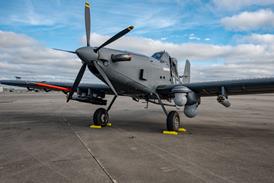When an airline can save $1.5 million a year by serving salads without a lettuce liner which nobody eats anyway, you know that cost-cutting has begun to bite.
These days, catering represents quite a dilemma for airlines. The marketeers say food remains a way for airlines to differentiate themselves, vital in a competitive market. Yet the accountants will say that food is also a major cost item, and as fares tumble it is becoming harder to justify.
If an airline wants to make itself unpopular with passengers, it has only to fiddle with its menus. Some years ago, one major carrier decided to save millions by downgrading its peanuts to a less expensive variety. It achieved instant notoriety.
Still, there are plenty of ways of saving money without the passenger even noticing (see feature on page 46). Outsourcing can bring savings, especially when competition among suppliers is encouraged. Changing passenger preferences often mean that cheaper, healthier food can be substituted for the ubiquitous steak. Waste can be reduced and new technologies can help.
Most US carriers, and low-cost airlines elsewhere, have all but abandoned onboard food on short flights. While this is a dangerous course of action, it is perfectly logical. After all, nobody expects to be fed on a one-hour train journey. Surely it is far better for airlines to concentrate their culinary expertise on feeding long-haul passengers.
Still, people have to eat. Not so long ago, a Wall Street Journal article painted a picture of passengers sitting in aircraft close to starvation, under the headline 'Airlines' cost-cutting gives rise to some famished fliers'. This sort of publicity gives the entire industry - not just the airlines concerned - a bad name.
Airlines contemplating drastic food changes would do well to heed a few simple guidelines:
Inform the passengers first. That way, they can grab a bite at the airport or bring sandwiches.
Don't remove food from high-yield passengers.
Find ways to explain why a passenger paying $49 for a ticket can't really expect food as well as transport.
Offer an alternative, such as food at the gate.
As always, the key to keeping customers happy and loyal is to make them believe that you are delivering value for money. One of the Wall Street Journal's famished fliers travelled for 11 hours coast to coast and had to survive on a bag of pretzels, a bag of Ritz Bits and a Diet Coke. She remarked: 'If I'm paying $1,200 or $1,500 for a ticket the airlines could do a little better.' That's what you call an understatement.
Source: Airline Business























